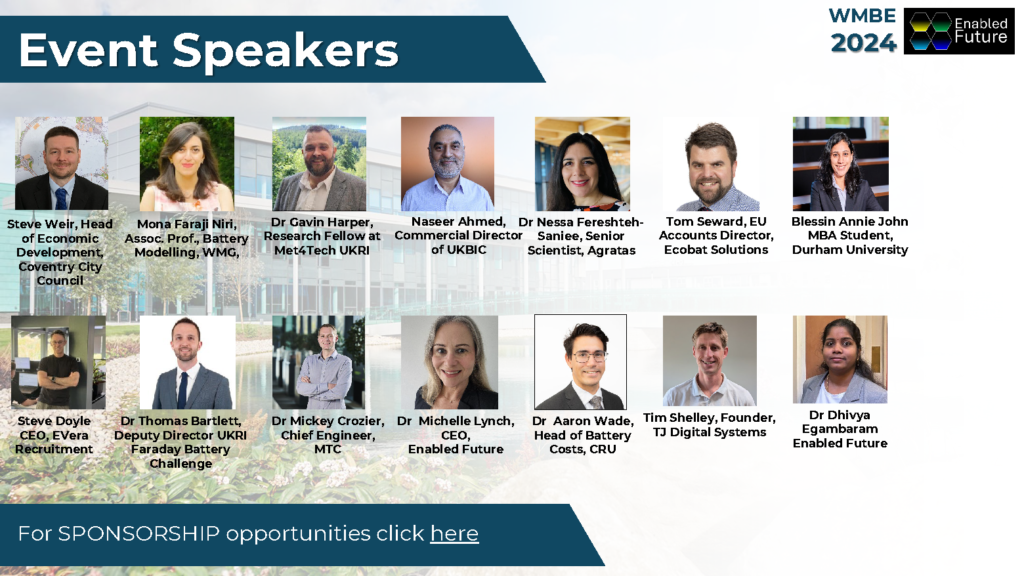Is Your Technology Portfolio Ready for a Sustainable Future?
Ensuring precious R&D funds are never wasted – technology directors know they must work towards profitable and sustainable technology portfolios. They also know they must mitigate economic and technical risks on scale-up – so they don’t create future headaches for the production side of the business. These folk are no strangers to the challenges of making the right choices in rapidly changing industries!
Are you asking yourself:
- How can we prioritise our resources for the best sustainable technologies?
- Can we ensure a stable supply of critical metals for our production?
- What innovations in materials and recycling will keep us ahead of the competition?
At EnabledFuture, we understand these challenges—and we’re here to help you tackle them head-on.
What EnabledFuture Can Do for Your Manufacturing Business:
We specialize in helping technology leaders like you optimize your operations and stay ahead in the race for innovation. Here’s how we support your goals:
- Expert Knowledge of supply chains and key developments in the catalysis, battery materials, hydrogen, and critical metals sectors, ensuring we can help you avoid costly mistakes and pitfalls.
- Bespoke Reports that deliver detailed insights on the innovations and outlook for catalysts and batteries. Tackling areas where information can be tricky to find with our expert searching techniques and vast network of industry contacts.
- Training Programs we provide structured and detailed training courses to empower your team with the latest advancements in carbon-efficient petrochemicals, renewables, catalysts, batteries and recycling technologies.
- Industry Tracking essential analysis for up-to-date intelligence on battery materials, battery, fuel cell and solar PV recycling. Have these handy trackers at your fingertips, and you’ll never miss the opportunity to develop a new lead when it comes along!
- Conferences & Expos that connect you with industry leaders, cutting-edge technologies, and innovations shaping the future of sustainable manufacturing.
Why EnabledFuture is the Right Partner for Technology Directors:
✅ Industry Expertise: Our team brings decades of experience in chemicals, catalysis, and battery supply chains.
✅ Tailored Solutions: We focus on both sustainability and profitability, thereby helping you drive innovation while optimising costs.
✅ Actionable Insights: With our in-depth market analysis and thought leadership, you’ll gain the strategic foresight to stay competitive in rapidly evolving markets.
Ready to Achieve Your Sustainable Technology Portfolios?
Staying competitive in the critical metals, catalysis, renewables and battery industries requires constant innovation and a deep understanding of emerging technologies. With our expertise, we help you turn sustainability into a business advantage.
Let’s collaborate to optimise your company’s offerings and ensure you achieve sustainable technology portfolios that meet the needs of the future.
Check out our latest company brochure and see for yourselves how we can help you achieve your profitable and sustainable technology goals!



